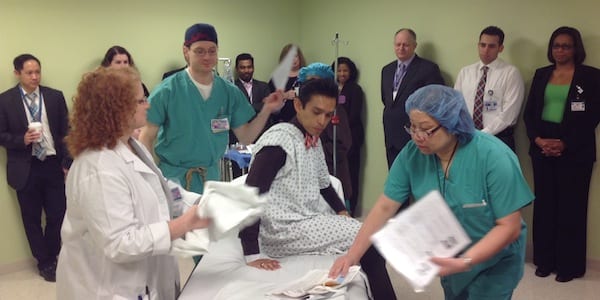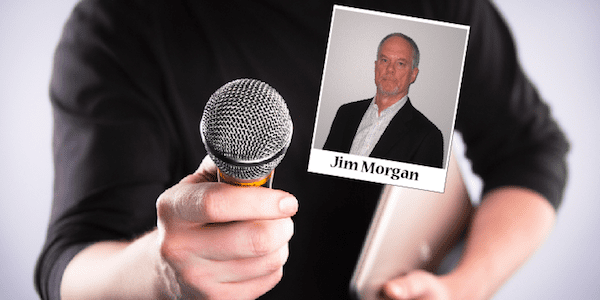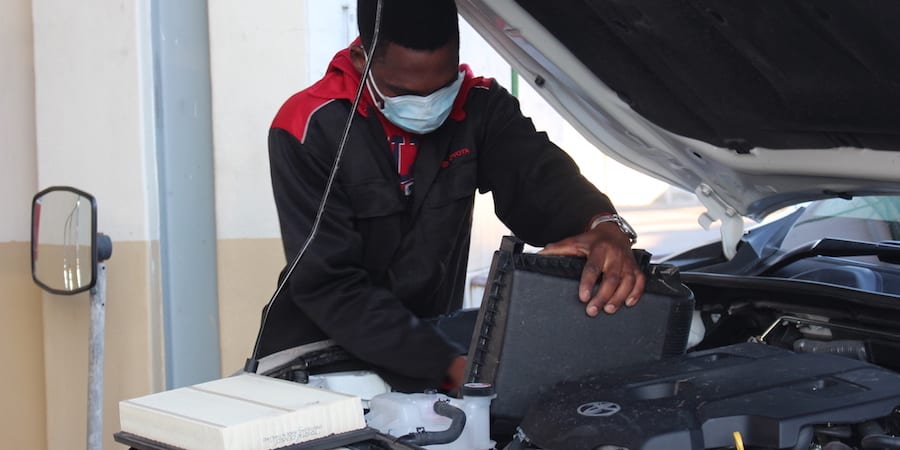
The lean transformation of New York's public hospitals
INTERVIEW - New York City's public hospitals system leveraged lean principles and techniques to improve the quality of care and boost organizational performance.
Interviewee: Joanna Omi, Senior VP of Organizational Innovation and Effectiveness, New York City Health and Hospitals Corporation
Roberto Priolo: Can you please introduce us to the NYC Health and Hospitals Corporation and its history?
Joanna Omi: The Health and Hospitals Corporation is the public hospitals system for New York City and the largest municipal healthcare system in the United States, serving 1.3 million people.
We have a long history: perhaps our best-known hospital is Bellevue, the oldest public hospital in the country, which was built in 1736, but HHC operates more than 100 HHC sites, from small community centers to hospitals with 800+ beds, in all five boroughs of the city. In 1969 these individual public facilities were brought together under the umbrella of HHC.
We have a lot of the legacy of the individual neighborhoods and communities each hospital was developed within. Only in the last 10-15 years have we begun to take advantage of our size and started to operate more effectively as a single entity.

RP: When did the organization first understand things had to change?
JO: In the early 1990s, HHC was having a hard time. We had several quality concerns and a poor reputation in some of the communities we served.
In 1993, Mayor Rudy Giuliani thought the answer to the corporation’s problems and to the financial drain on the city they represented would be to privatize parts of the system and reduce the size of the system. Many public healthcare advocates saw these strategies as tremendously damaging to the communities we served.
A legal battle followed, which resulted in 1999 in the stoppage of the privatization plan. That process caused us to look at our shortcomings and start on our pathway to change.
RP: How did this evolution unfold?
JO: One of the main changes we implemented was the redefinition of our financial relationship with the city: rather than running a deficit every year and asking the city to help us out, we restructured the relationship so that we started to get paid by the city for services rendered.
We continued to provide healthcare to uniformed services (Police Department, Fire Department, and so on), and in the city jails, and we started to run some specific programs the city required, such as services for victims of sexual assault.
This gave us more credibility with the city, and encouraged us to manage more effectively. We began to run in the black for the first time, and did that for five years running. We established credit ratings that we had never had before, which allowed us to go out to the market for bonds.
We essentially rebuilt the system. That was a very explosive decade for us in terms of stability and growth.
Something else had changed: we had begun a long march towards stable leadership. Historically, we had had a very rapid turnover of presidents and senior leaders. It is very difficult to manage a system and build long-term strategy when leadership changes every 18 months. The last several presidents have had longer tenures and promoted smooth transitions between each other.
RP: What did stability bring you, and how did you eventually get to lean?
JO: When it’s stable at the top there is more opportunity for longevity in the next line of management as well. Once we stabilized the finances of the system and began to rebuild our facilities, we were able to again focus on quality.
We did some great work in chronic illnesses that represent very big problems in many communities (diabetes, hypertension, adult and childhood asthma, among others), as well as in revenue cycle and access to care in the primary care areas. We even won a number of awards.
However, we knew that we were in danger of not being able to sustain gains. That’s what ultimately led us to lean. It was the end of 2007 when we embarked on our lean journey, with the help of our sister system, Denver Health, and an external consultancy firm, Simpler. In talking with our union partners, we decided to call this new lean effort Breakthrough, in keeping with our intention to make major strides.
RP: How did you structure the implementation in the early stages?
JO: At the enterprise level, we first set a vision for our lean journey and began some improvement work in multiple areas of finance, supply chain and physician services, in order to look at strategic priorities and what we needed to do as a corporation. Right behind that, facilities that wanted to go first were resourced with consultants and staff so that they could initiate work with lean at hospital or community health center level, identifying the first value streams they would tackle. Our president at the time felt the most important thing to ensure uptake was to engage local leadership and staff in the process, which meant encouraging them to determine their own priorities for their initial focus.
In terms of activities, we built the implementation from the ground up, but there was always oversight at enterprise level to ensure there would be a single model of deployment and a single infrastructure for each facility to deploy.
RP: What guidance did you offer those facilities and what gains were you able to achieve?
JO: We were prescriptive in that we said to start with two value streams. We expected facilities to work on 6 to 8 value streams by the end of the first year. Clearly, we were being too ambitious, as nobody reached that level of spread in only 12 months. Nevertheless, many facilities lined up.
We have over 100 sites, with 23 larger facilities or subsidiaries. At the moment, we have 19 that are engaged to the point that lean is just the way they work.
RP: What’s your plan for the expansion of lean within HHC?
JO: Scaling up our lean efforts poses an interesting dilemma. On the one hand, we want to be able to respond to pull (facilities that want to launch lean) because we can’t assume it (pull) will always be there. On the other hand, we are at a point where resourcing those facilities would mean not to resource others; therefore we need to build more capacity through embedded experts and manager development.
We don’t want to undermine the existing efforts of facilities that have already started their lean journey, but at the same time we don’t want facilities that are eager to start to jump out and attempt to do something when they are not adequately equipped; we want to help everyone succeed.
RP: What does resourcing mean at this stage? Do you still get external help?
JO: We do, but not for new-starts. We are now capable of launching lean in new facilities relying solely on our internal resources. Resourcing these days could mean applying our own internal expertise or complementing that with external help.
RP: How do you develop the internal resources?
JO: The role of the enterprise office is to support Breakthrough and to provide expert consultation to sites, which might mean supporting the launch of lean in a new facility or helping a facility in a particular area where there is not enough expertise. We also provide about 90% of the training that takes place across the corporation.
We provide a five-level certification to become a lean expert within HHC. To go through the five levels takes about two years, provided that you are very focused and have ample opportunity to practice.
We have about 37,000 employees at HHC, of which about 5,700 have taken some form of training. Very few have gone through all five levels (platinum level) so far.
Breakthrough Deployment Officers, the lead lean people at the sites (one per site), are expected to reach platinum level, while facilitators must be at least gold certified. However, at some point, all HHC employees are expected to take the 90-minute Breakthrough Awareness course we provide online. There is also a one-day lean course (which is actually the first level of the certification) in which at least 40% of the corporation is expected to participate.
In general, we are working to develop a cadre of people who are our future leaders with a strong grounding in lean. We are also working to make lean-specific positions in the organization more sought after, so that we can get the strongest candidates possible.
RP: What can you tell me about the metrics you use and the data you gather?
JO: Since we launched Breakthrough we have achieved some impressive gains in several facilities. What we still struggle with is corporate-wide results, because historically each hospital, clinic, health center, etc. has measured progress in a different way or has used different metrics altogether.
Well, this is beginning to change; our IT department is currently building a single site as a repository for all measures. It’ll be great to have a place with credible and uniformly defined and regularly and transparently reported data, even though selecting the number of measures will take us some time.
RP: What other factors affect the success of lean initiatives across HHC?
JO: It’s not all metrics. It’s important to note that each facility has its own characteristics. Take length of stay as an example: this is a very high level metric, with lots of inputs that will necessary vary from hospital to hospital.
Another example: we are currently looking at flow in the Emergency Department. Although 8 of our 11 EDs are working with lean every day to bring change around, the dwell time (the time between when it is determined that the patient must be admitted to the time the patient is in a bed) has moved very little since we started to apply lean. That’s not a function of measurement, but of the variation in what elements affect dwell time at each facility.
We are too focused on doing short-term problem solving as opposed to establishing standard work and understanding demand and takt time in order to then set in place the standard work necessary to achieve that takt.
Over the next year, some of our work will focus on standardizing the approach to dwell time and better look at how we can spread this across the Corporation. We need to study and replicate the best methods so that we don’t re-invent the wheel in each facility.
RP: Understanding demand seems to be the common thread here – is this what HHC will focus on going forward?
JO: Yes. This is what we haven’t done effectively until now and I am sure this approach will make a difference.
We know and understand that there is variation across the day and the week, that there are shifts in volume in different EDs (for instance, in community hospitals and trauma centers), that there are different types of patient composition, and that these require different staffing.
We know there is variation, but we need to focus on identifying true demand. Understanding it will be a common theme that will help us tackle the issues preventing us from meeting patient needs.
Those are the common problems we’ll see everywhere, across HHC, but if we don’t solve them in the context of demand we won’t be able to get rid of them for good.
RP: What is the role of leadership and what type of interaction with the front line is in place at the Corporation?
JO: We are a very hierarchical organization, and very traditional in top down leadership. Our Breakthrough activity has introduced a very different way for us to look at the role of leadership. We are getting to the point where leadership defines the goal but not how to get there.
Dr Ramanathan Raju is our new president. As HHC's former executive vice president, and before that, CMO/COO in one of our facilities, Dr Raju is very familiar with the Corporation. He understands the value of Breakthrough. In fact, when he was EVP, he was executive sponsor of our supply chain value stream and played the same role in the work we did around physician services.
People at the front line who have been engaged in rapid improvement events and other activities like our daily management system understand their role and are increasingly empowered through the availability of knowledge, tools, and techniques to bring change at their level.
The hard part is middle management, which is fairly small in our organization. At that level, we are still rewarding people for crisis management (we are great at managing crises), even though we know that set of skills is not the same we need to implement a long-term strategy. Our managrs need more guidance and development if they are to truly understand their role in translating the ‘what’ coming from hoshin kanri and our enterprise TPOCs into the ‘how’ they need to happen at the front line.
RP: What are the most noteworthy improvements you have been able to achieve?
JO: One area of improvement that has been taken corporate-wide is how we manage patients in the Emergency Room so that, once admitted, they are not readmitted for the same reason. We call it our Care Case Management Program.
Standard work was created with all those involved in managing care in the ED. The patients who were identified as having recently been admitted or as individuals at risk of frequent hospitalization (like people with chronic conditions) were identified in the ED and assigned a care manager who would ensure their care was followed through the inpatient and early discharge, so that the follow-up visit can be had as outpatient rather than going through ED again.
Other success stories include the drop in length of stay for behavioral health adult patients, which went down from 22 to 15 days, and a double-digit improvement in patient satisfaction in the first month of implementation of our daily management system. We had tried for a long time to increase satisfaction by tackling tiny variables all over the place (temperature of the room, meals, responsiveness of staff, and so on), but had little success. Our daily management system is working wonderfully, because it creates awareness of specific issues of patients for the care team. It has also contributed to reducing waiting time in ambulatory care clinics, lowering the number of handoffs, and limiting patient movement. All of these factors add up to create a better environment for our patients and our staff.
THE INTERVIEWEE

Read more


INTERVIEW - Jim Morgan looks back at his years at Ford Motor Company and talks about the challenges and opportunities of applying lean management ideas to new product development .


CASE STUDY – This Polish debt collection company is refocusing its work around true customer needs and increasing problem visibility by implementing hoshin kanri.


FEATURE – What are the immediate signs that tell us that our workplace is not conducive to kaizen? The author draws on his experience as a coach at the gemba to highlight them. Look out for them in your own company!


FEATURE – You have never seen a workshop like this before: Halfway Ngami in Botswana has creatively transformed car servicing and repairs by making problems visible and introducing flow.

